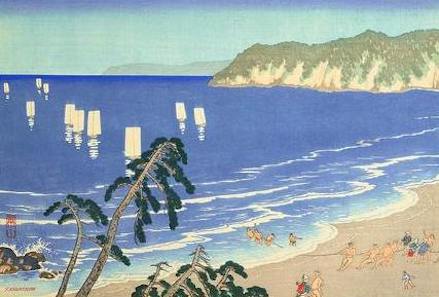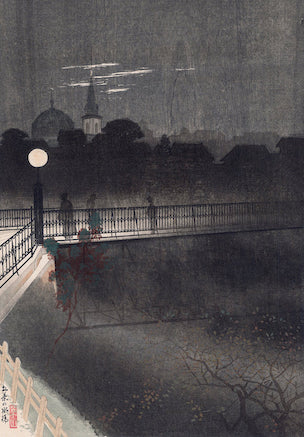Japan Art and Kawatsura Yoshio: Isaac Newton and Optics (Light and Perception)
Lee Jay Walker
Modern Tokyo Times

The artist Kawatsura Yoshio (Negoro Raizan – artist’s name) was born in the Meiji Period and died in the early 1960s.
Sadly, the brutal forces of nature destroyed much of his work (similar to other artists). However, unlike the notable publisher Watanabe Shōzaburō (1885-1962), his publisher Yoshikawa Kôbunkan suffered greatly after the Great Kantō Earthquake in 1923.

Isaac Newton said: “Was the eye contrived without skill in Opticks, and the ear without knowledge of sounds?…and these things being rightly dispatched, does it not appear from phænomena that there is a Being incorporeal, living, intelligent…? Whence arises all that order and beauty we see in the world?”
NASA reports, “Isaac Newton’s experiment in 1665 showed that a prism bends visible light and that each color refracts at a slightly different angle depending on the wavelength of the color.”

The prints by Kawatsura Yoshio are like an optical illusion – even if not in the real sense. Yes, they exist, but so little is known about this artist that “the brain needs to create its perception.”
Isaac Newton said: “The changing of bodies into light, and light into bodies, is very conformable to the course of Nature, which seems delighted with transmutations.”

Above is a stunning and mysterious print of Tokyo with the “light” of the Russian Orthodox Cathedral (Holy Resurrection Cathedral – Nickolai Cathedral). However, the “light” is a mirage – religiously and in the setting of Japan that is once more entering another anti-Russian period even if the cathedral exists. Also, the mirage of peace – whether in religion or political ideas – fails to deliver. Therefore, like the life of Kawatsura Yoshio, an optical illusion exists concerning the ideas that shaped him.
The American Museum of Natural History says: “Your senses gather information and send it to your brain. But your brain does not simply receive this information—it creates your perception of the world.”
Accordingly, the Buddhist Pagoda in the first print – and the Russian Orthodox Cathedral – glosses over the anti-Buddhist period of the Meiji Period (1868-1912) and the war between Japan and the Russian Empire (1904-1905). Therefore, the brain creates a false perception of reality when viewing.

Modern Tokyo News is part of the Modern Tokyo Times group
http://moderntokyotimes.com Modern Tokyo Times – International News and Japan News
http://sawakoart.com – Sawako Utsumi and her website – Modern Tokyo Times artist
https://moderntokyonews.com Modern Tokyo News – Tokyo News and International News
PLEASE JOIN ON TWITTER
https://twitter.com/MTT_News Modern Tokyo Times
PLEASE JOIN ON FACEBOOK